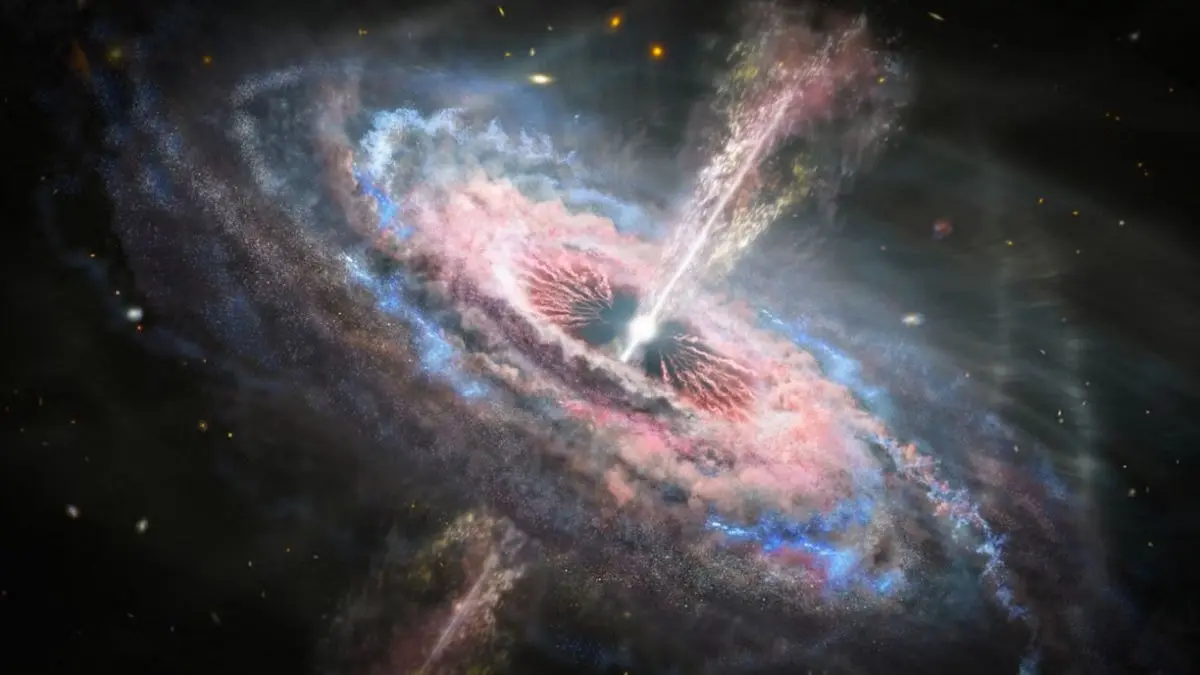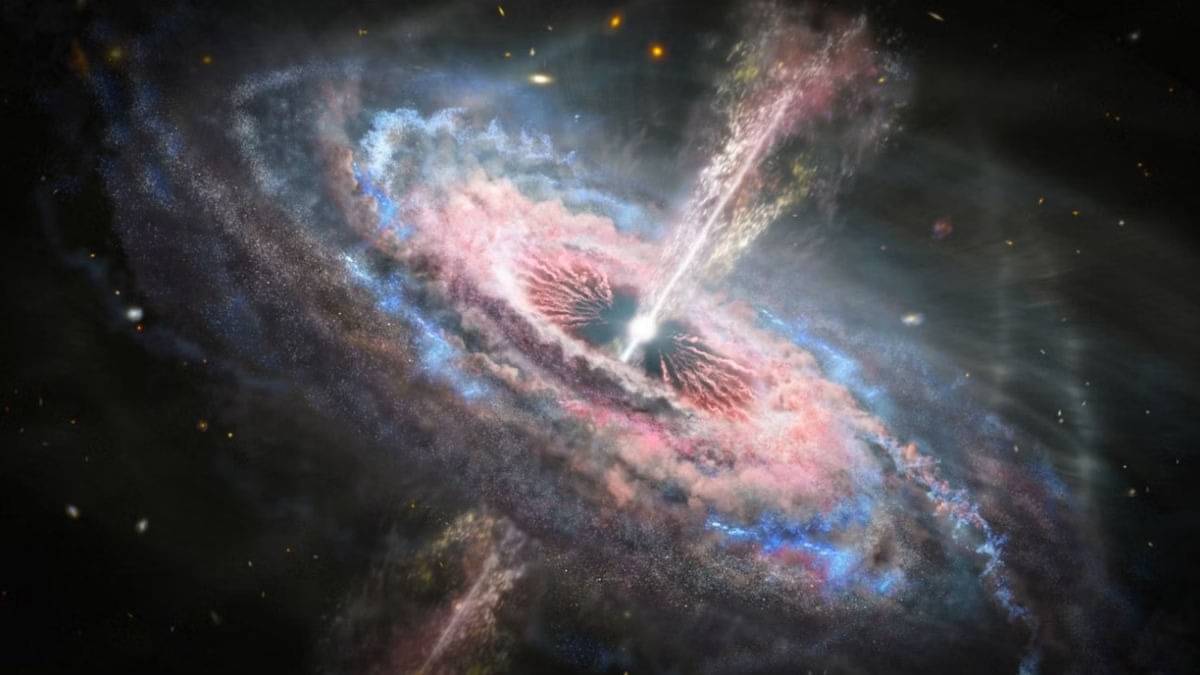
Stunning Cosmic Mystery: Astronomers Capture First-Ever Image of Two Black Holes Orbiting Each Other | Image:
NASA/Representative
In a groundbreaking cosmic discovery in astrophysics, scientists have captured the world’s first image of two supermassive black holes orbiting each other at the core of a blazing quasar known as OJ287. This historic first discovery has confirmed a prediction that has eluded astronomers for generations. This is the first direct visual proof of a binary black hole system.
The newly released radio image shows the two black holes locked in a slow, powerful cosmic dance about 5 billion light-years away, in the constellation Cancer.
This milestone was achieved using radio imaging technology that combined Earth-based telescopes with the RadioAstron (Spektr-R) satellite, a Russian radio telescope whose orbit extended halfway to the Moon, giving astronomers a view roughly 100,000 times sharper than typical optical images. When researchers compared the new image with earlier theoretical models, the results were a perfect match — the two black holes appeared exactly where scientists expected them to be.
This one of the significant discoveries in modern astronomy was was published on October 9 in The Astrophysical Journal.
The team of astronomers who have confirmed this landmark observation, are Mauri Valtonen and his associates including Alok C Gupta, Shubham Kishore from Aryabhatta Research Institute of Observational Sciences (ARIES), Nainital and A Gopakumar from TIFR, Mumbai.
Powerhouse Quasar OJ287 – A Cosmic Mystery
Quasars are extraordinarily bright regions surrounding supermassive black holes, where infalling gas and dust generate enormous energy. OJ287 is one of the best-known quasars, bright enough to be seen even with amateur telescopes.
![]() Part of an image of two black holes in orbit around each other in quasar OJ287 (Image: Image credit: University of Turku)
Part of an image of two black holes in orbit around each other in quasar OJ287 (Image: Image credit: University of Turku)
“Quasar OJ287 is so bright that it can be detected even by amateur astronomers with private telescopes,” study lead author Mauri Valtonen, an astronomer at the University of Turku, Finland, said in a statement.
The new image confirms that two black holes are locked in orbit around one another, producing an extraordinary cosmic light show that astronomers have been tracking for decades.
A Century of Clues
Astronomers have been observing quasar OJ287 for more than a century. First photographs of the same patch of sky were taken in the late 1800s.
According to the statement, the mystery deepened in 1982 when Finnish astronomer Aimo Sillanpaa observed that OJ287’s brightness rose and fell in a repeating 12-year cycle, suggesting the presence of two orbiting black holes. Since then, hundreds of researchers have tracked the quasar’s behaviour, waiting for proof that two massive black holes shared the same galactic core.
“The black holes themselves are perfectly black, but they can be detected by these particle jets or by the glowing gas surrounding the hole,” Valtonen said.
The images also revealed a fascinating detail – a twisted jet emerging from the smaller black hole which is shaped like the spray from a spinning garden hose. This spiraling jet is caused by the smaller black hole’s rapid orbit around its giant partner.
According to the astronomers, this discovery marks a turning point in understanding how galaxies evolve and how supermassive black holes interact.

